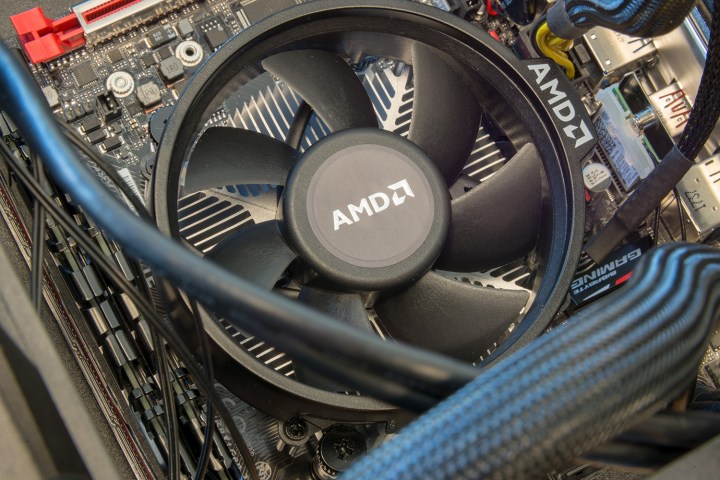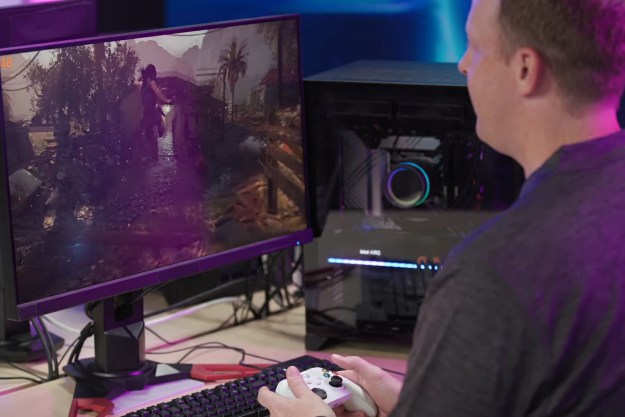
AMD announced an affordable desktop processor with integrated graphics that’s made for gaming. With pricing starting at just $55, AMD described its Athlon 200GE as a reimagined chip that’s been “optimized for everyday PC users.” The dual-core Athlon 200GE comes in two SKUs — a general consumer release and an AMD Athlon Pro 200GE targeted at enterprise and business users.
Both the Pro and non-Pro variants share similar specs, with two cores and four threads, a base clock speed of 3.2GHz, and three graphics compute units. Neither variant comes with boost speeds, and AMD lists 5MB of cache for the Pro model. The main difference between the two variants is that the Pro version will benefit from commercial support and better manageability. The Athlon 200GE is a 35W processor that combines the dual-x86 Zen compute cores with AMD’s Radeon Vega graphics architecture for a system-on-chip design.
The chips are based on AMD’s Raven Ridge architecture, which combines CPU and GPU into what the company labels as its APU, or accelerated processing unit. The Athlon 200GE is unique in that unlike prior members of the Athlon family, the GPU portion isn’t disabled. AMD claims the chip is ready for advanced workloads, like high-definition gaming.
“It offers up to 67 percent more graphics performance and up to two times greater power efficiency, delivering 84 percent faster high-definition PC gaming than the competition,” AMD said in a statement. We’ll have to wait and see how AMD’s new Athlon processors benchmark and perform in real-world tests, but gamers looking for more performance may likely want to upgrade to AMD’s Ryzen series of processors. The Ryzen 3 2000G, for example, retails $100 currently and comes with a quad-core processor architecture and improved integrated Radeon Vega 8 graphics.
AMD’s new Athlon 200GE will likely compete against Intel’s entry-level Pentium Gold G5400 processor, which debuted earlier this year. The Pentium G5400 comes with a similar dual-core and four-thread design processor design along with integrated Intel UHD Graphics 610. Intel’s chip has a base speed of 3.7GHz and comes with 4MB of cache, but it’s a less energy efficient processor at 58 watts. Intel’s model retails for $64. An upgraded Intel Gold G5600 processor retails for $88, and that chip comes with a slightly faster 3.9Ghz clock speed. Both Intel Pentium processors and AMD’s pair of Athlon 200GE CPUs are based on a 14nm design.
AMD also announced new 2nd-generation Ryzen Pro for commercial clients. The Ryzen 7 Pro 2700X and Ryzen 7 Pro 2700 come with an eight-core design with 16 threads. The 2700X is a 105-watt chip and has a 3.6GHz base speed, while the 2700 model is a 65-watt processor with a 3.2GHz base speed. Both the 2700 and 2700X have a boost speed of 4.1GHz. The AMD Ryzen 5 Pro 2600 is a six-core chip with 12 threads that utilize a 65-watt design. That processor has a base speed of 3.4GHz and maximum boost speed of 3.9GHz,
Editors' Recommendations
- It’s time to stop ignoring the CPU in your gaming PC
- AMD’s graphics card sales just took a nosedive
- What is CPU cache, and why is it so important for gaming?
- Gigabyte just confirmed AMD’s Ryzen 9000 CPUs
- All of the exciting new GPUs still coming in 2024



